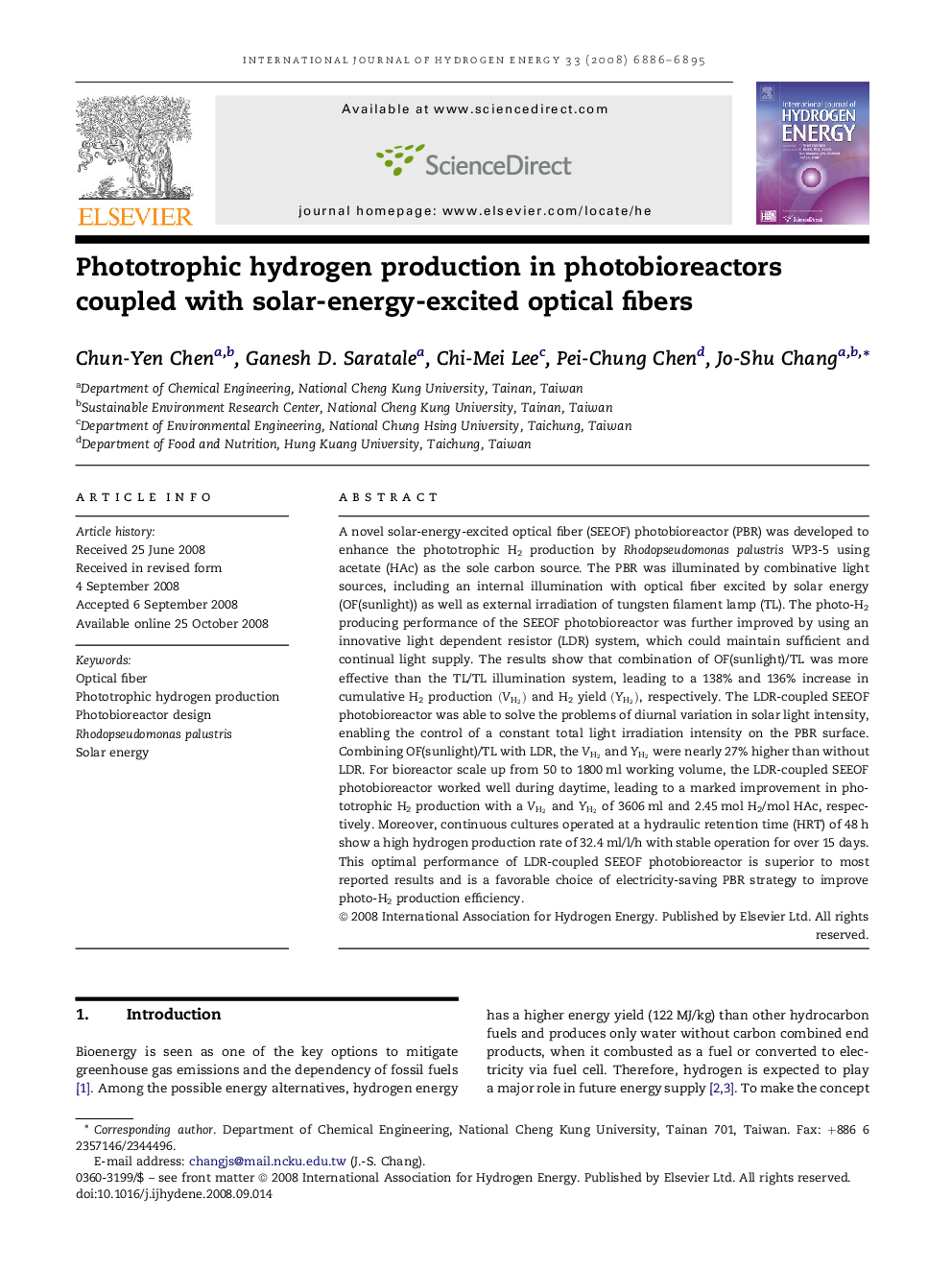| Article ID | Journal | Published Year | Pages | File Type |
|---|---|---|---|---|
| 1278229 | International Journal of Hydrogen Energy | 2008 | 10 Pages |
A novel solar-energy-excited optical fiber (SEEOF) photobioreactor (PBR) was developed to enhance the phototrophic H2 production by Rhodopseudomonas palustris WP3-5 using acetate (HAc) as the sole carbon source. The PBR was illuminated by combinative light sources, including an internal illumination with optical fiber excited by solar energy (OF(sunlight)) as well as external irradiation of tungsten filament lamp (TL). The photo-H2 producing performance of the SEEOF photobioreactor was further improved by using an innovative light dependent resistor (LDR) system, which could maintain sufficient and continual light supply. The results show that combination of OF(sunlight)/TL was more effective than the TL/TL illumination system, leading to a 138% and 136% increase in cumulative H2 production (VH2)(VH2) and H2 yield (YH2)(YH2), respectively. The LDR-coupled SEEOF photobioreactor was able to solve the problems of diurnal variation in solar light intensity, enabling the control of a constant total light irradiation intensity on the PBR surface. Combining OF(sunlight)/TL with LDR, the VH2VH2 and YH2YH2 were nearly 27% higher than without LDR. For bioreactor scale up from 50 to 1800 ml working volume, the LDR-coupled SEEOF photobioreactor worked well during daytime, leading to a marked improvement in phototrophic H2 production with a VH2VH2 and YH2YH2 of 3606 ml and 2.45 mol H2/mol HAc, respectively. Moreover, continuous cultures operated at a hydraulic retention time (HRT) of 48 h show a high hydrogen production rate of 32.4 ml/l/h with stable operation for over 15 days. This optimal performance of LDR-coupled SEEOF photobioreactor is superior to most reported results and is a favorable choice of electricity-saving PBR strategy to improve photo-H2 production efficiency.
